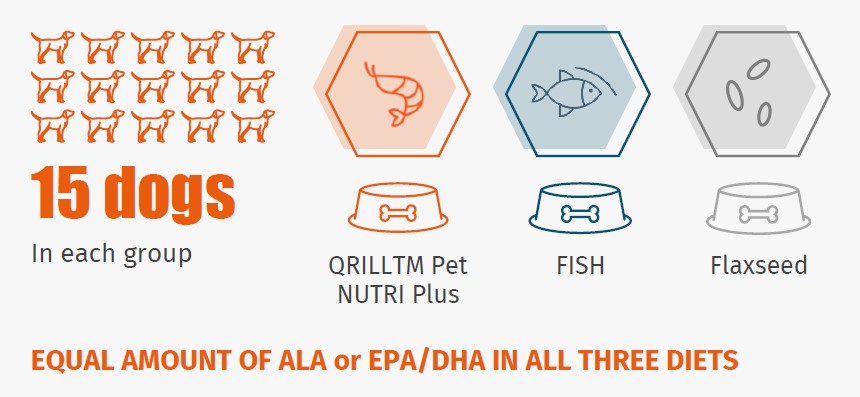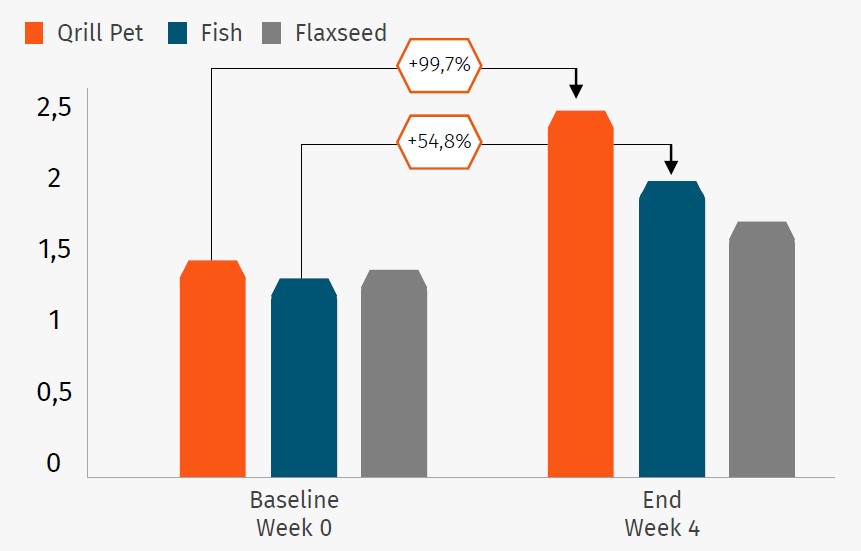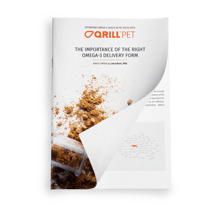The study concludes that krill meal (even in low inclusions) outperforms fish meal and flaxseed in raising omega-3 levels in Alaskan Huskies.
Omega-3 is considered one of the most impactful nutritional supplements you can give to pets. Its benefits range from heart health, brain development, improved immune defense, reduced inflammation and better skin and coat appearance, to name a few.
Since omega-3 fatty acids are not produced naturally in the body, they need to be supplied through the pet diet. You can find several sources of omega-3 for pet food on the market today, however, it can be challenging to understand how each source of this important nutrient may differ in effectiveness just by reading the product label.
Research scientists from the Swedish University of Agricultural Sciences and Aker BioMarine decided to help us answer this very question. They put three different omega-3 sources to the test – comparing their benefits side-by-side in a feeding trial with Alaskan Huskies.

Scientists asked: how does krill meal at lower inclusion levels perform in the pet diet?
A similar study was conducted back in 2020 by Aker BioMarine. That study marked a first step in understanding that krill (in the form of QRILL™ Pet PL NUTRI Plus) and fish oil were most effective in raising the levels of omega-3 in the dogs tested. This new study run in Sweden aimed to take those findings one step further.
"Our goal with this new study was to understand whether krill meal, even at lower inclusions levels, could still perform as well or better than two other omega-3 sources."
“Our goal with this new study was to understand whether krill meal, even at lower inclusions levels, could still perform as well or better than two other omega-3 sources. And so, in our trial we analyzed the effects of krill meal (at a lower inclusion level of 3%) versus fish meal and flaxseed at similar levels, and compared their effects on the dogs,” says scientist Hanna Lindqvist from the Swedish University of Agricultural Sciences.
45 dogs, four weeks, three different omega-3 test diets
The study ran for four weeks and included 45 Alaskan Husky sled dogs. The researchers began the trial by measuring the omega-3 levels in the dogs. They discovered that their levels were low, measuring 1.3% on average, which is common in pets.
Once the baseline was established, the dogs were divided into three groups, each with its own test diet that included either krill meal, fish meal or flaxseed. The dogs were fed twice a day, and once the trial was complete, the omega-3 levels were compared once again.

The results are in, and krill meal comes out on top
Once measured, the omega-3 levels revealed clear results. Krill meal was shown to be most effective at raising the omega-3 levels in the dogs, bringing it up to an average of 2.4% among the QRILL™ Pet PL NUTRI Plus consuming group members.
Fish meal was the second most effective source of omega-3, as it was able to increase omega-3 levels to an average of 1.9% in the group. Flaxseed was the worst performer in the group, having had no significant effect on the dogs’ omega-3 levels.

“What we learned from this trial was that not every omega-3 source performs equally and that both the delivery molecule of the omega-3`s as well as the type of omega-3 makes a difference. The phospholipid omega-3 in krill appears to be more effective than triglyceride omega-3 from fish or alpha-linolenic acid from flaxseed. There is an opportunity for commercial feeds to benefit from a more effective ingredient, and we found that even in lower doses, krill meal is still the most effective in terms of raising the omega-3 index in pets ,” concluded Lindqvist.
How important is the right omega-3 delivery form

